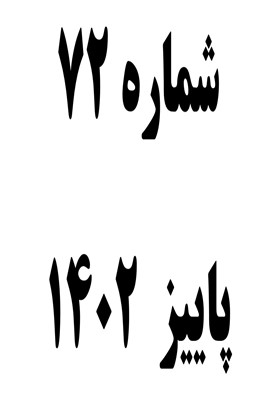-
-
List of Articles
-
Open Access Article
1 - Explanation and analysis of political, social and cultural factors in Parthian urban development
Bahareh Rashti karim yousefjamali naser jadidi Feizollah Boushasb Gousheh -
Open Access Article
2 - An introduction to the thoughts and political positions of Ayatollah Agha Najafi Quchani
ali soleimanpour -
Open Access Article
3 - Identifying the boundaries of old Tabarstan based on its political and historical geography
nahid pakzad mohamadreza sharifzade roknabadi davod Mahsa .khoie -
Open Access Article
4 - Investigating the role of political factors in the evolution of the decorative arts of the Timurid era (with an emphasis on the art of book design and architecture)
masumeh sadat nazm Omid Sephri Rad rajabali vosoghi motlagh -
Open Access Article
5 - The role of Shia scholars in the development of Soltaniyeh’s schools in the period of Uljaito(1303 – 1316)
Hosein Arian Mehdi Afzali -
Open Access Article
6 - The role of Shiite scholars and scientists in the cultural and social developments of Qazvin
Asghar Karimkhani محمد سپهری ستار عودی -
Open Access Article
7 - The role of Tehran newspapers since 1299 coup in Reza Shah's rise to power
Mohammadreza Asadpoor Saadatloo ali biqdeli Seyyed Mohammad Saghafinejad -
Open Access Article
8 - The Mediatory Role of Sayyids Between Ruling Class and Commoners in Timurid Era
robabeh sadaat jazbi Reza Dehghani mahmood seyyed
-
The rights to this website are owned by the Raimag Press Management System.
Copyright © 2021-2025







